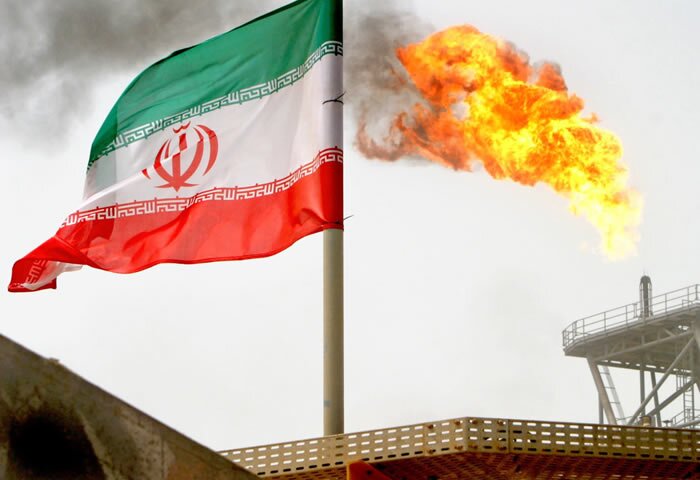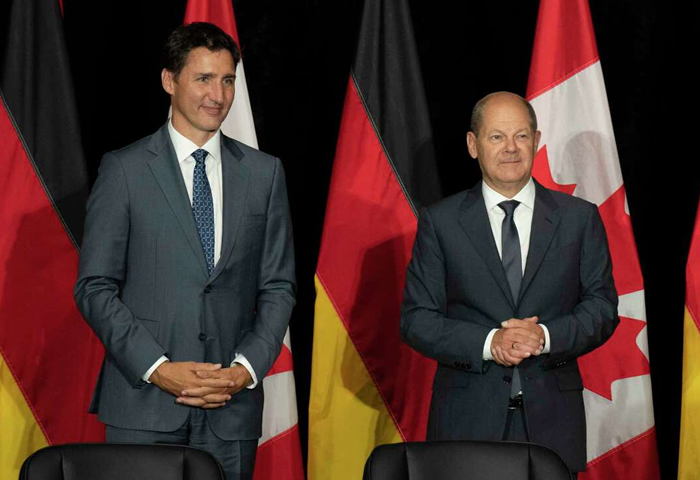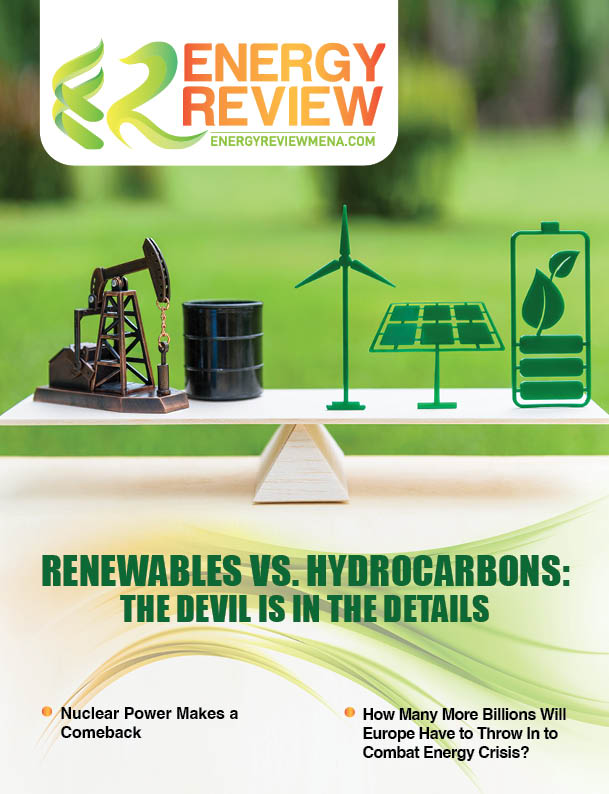US-Iran relations have always been very tense and one little push could have damaging consequences. After a series of naval incidents between the two, the stand-off is approaching its peak. The US withdrew from the nuclear deal last year and re-imposed sanctions on Iran whilst urging its European allies to halt their oil trade with Iran. This has had adverse consequences on Iran’s economy.
Trump imposed new sanctions on Iran due to a series of events that took place over the course of May and June.
Iran’s Foreign Minister, Mohammad Javad Zarif is for the belief that the US was the one that “left the bargaining table” but added “they are always welcome to return”.
He said this in reference to the US’s newly imposed sanctions and their withdrawal from the nuclear deal. Indeed, US President Donald Trump’s reason for pulling out of the agreement was that, in his view, it granted Iran too many concessions and failed to halt their missile program. The deal meant that it would curtail Iran’s nuclear program but ease the US and other internationally-imposed sanctions.
“Sanctions imposed through the executive order… will deny the Supreme Leader and the Supreme Leader’s office, and those closely affiliated with him and the office, access to key financial resources and support,” said Trump.
He added that the US will “increase pressure” on Iran so long as they do not have a nuclear weapon. Indeed, the sanctions are expected to lock up several billions of dollars in Iranian assets.
The US tightened oil sanctions on Iran back in April which cut by a great deal the country’s oil exports which are a crucial source of income for the country. Iran’s responses to this have breached some key parts of the nuclear deal as the country exceeded its limits on uranium stockpiles and has threatened to take additional steps to breach more parts of the agreement, if the US does not offer some form of relief on the economic sanctions.
Trump has been planning to send Navy ships to the Strait of Hormuz in an effort to help escort oil tankers in the Gulf to provide protection against a potential attack from Iran. However, many experts have warned that this move would not only cost a lot of money, but it would also drag both countries into a war that will cause an equal amount of damage.
The Strait of Hormuz is known for being one of the most important waterways for global energy trade. It is situated between the Persian Gulf and the Gulf of Oman and is the only means of passage by sea from the Persian Gulf to the open ocean. Also, it has the world’s most strategic choke points which, in military strategy, means that armed forces are required to pass through.
In fact, around 33% of the world’s liquefied natural gas and around 20% of total oil consumption (globally) pass through this region, making it a strategically vital location for international trade. What is more, is that the narrow waterway sees $1.2 billion’s worth of the world’s oil-flow pass through it on a daily basis.
The US is currently working on building an international coalition by bringing navies together to protect oil tankers moving through the strait. They plan to send “command and control” ships to the area which will in turn lead the effort in protecting other countries’ vessels by escorting the tankers.
“Escorting in the normal course of events would be done by countries who have the same flag, so a ship that is flagged from a particular country would be escorted by that country,” said Chairman of the Joint Chiefs of Staff, General Joseph Dunford.
He continued, “What the United States is uniquely capable of providing is some of the command and control, some of the intelligence, surveillance and reconnaissance.”
The countries the US plans to work with and their level of involvement are yet to be revealed.
There were some attacks on oil tankers back in May this year and the US, among many others, has blamed it on Iran- accusations which Iran has denied. Previously, six oil tankers which were damaged as they sailed through the strait, are believed to have been intentionally sabotaged. This came amid a month-long standoff between the two countries.
Iran on the other hand, threatened to stop following some key parts of the 2015 nuclear deal and asked its proxies to prepare for war. While there was no mention of Iran pursuing nuclear weapons, tensions are still on the rise between the two nations.
US National Security Adviser, John Bolton, previously announced the US was going to deploy an aircraft carrier and bomber planes to the Persian Gulf as a response to Iran’s “troubling and escalatory indications and warnings”.
Bolton also stated that the move against Iran was supposed to “send a clear and unmistakable message to the Iranian regime that any attack on the United States’ interests or on those of our allies will be met with unrelenting force.” He added that while the US does not want to go to war with Iran, they are “fully prepared to respond to any attack, whether by proxy, the Islamic Revolutionary Guard Corps, or regular Iranian forces”.
A few days after the incident, it was found that Iran intentionally targeted US troops in Syria and Iraq and used drones against the US in a waterway close to Yemen and that Iran placed cruise missiles on ship to prepare for a potential attack from/against the US Navy’s vessels. However, many are of the belief that Bolton and many others in the administration may have inflated the threat and caused more fear. However, it became very clear that the US’s response to the incidents raised the tensions between the two countries quite dramatically and the events that followed only made matters worse.
Subsequently, Iranian President Hassan Rouhani said that they would no longer follow parts of the nuclear deal from 2015 if Iran wasn’t provided with financial relief within 60 days. He also mentioned that his country would start to collect more components to up their production of nuclear, which could potentially reach a level that was previously banned. The nuclear deal with some European countries, Russia and China banned such actions.
The issue reached its peak a few days later when four oil tankers were damaged in attacks near the strait, two of which belonged to Saudi Arabia, one to the United Arab Emirates, and the last one belonged to a Norwegian company. United Nations ambassadors from the three countries said the damages came after divers were used to place mines on large ships and even though the US blamed Tehran for the incident, the diplomats did not specify who they thought the culprit was.
However, Iran denied its involvement but the very next day, Iran-backed rebels in Yemen (Houthi) launched an attack on a Saudi pipeline and Iranian forces in Iraq were instructed to prepare for war.
To make matters worse, two oil tankers near the Gulf of Oman were damaged; Trump then blamed Iran and threatened to send 1,000 more troops to the region to counter them.
The biggest issue of all between the two nations is that in the past, whenever the tensions between them spiked, Iran tended to threaten to shut down the Strait of Hormuz which would cause a huge impact on the global energy market- possibly a potential crisis. Although, while Iran threatens the US with this quite often, they don’t usually follow through with them.
“By signaling that this supply is not safe and can be disrupted, Tehran is letting the world know it has escalation options,” said Iran expert at the Foundation for the Defense of Democracies, Behnam Ben Talebu.
Rouhani commented on the US-imposed sanctions on Iran by stating, “For 14 months, the biggest economic and military power in the world has imposed the toughest sanctions on the people of Iran. But the resistant people of Iran have stood firm in these 14 months, and every route the Americans have taken has led to defeat.”
He also added that despite the sanctions imposed on them, Iran’s national debt has decreased by 25 per cent since 2017.
According to the International Monetary Fund, Iran’s economy is expected to experience a drop in its GDP by around 6 per cent this year.
In May last year, Trump signed a document which reinstated sanctions on Iran after announcing the US’s withdrawal from the nuclear deal due to Iran’s alleged support for foreign proxy groups and terrorists. The sanctions affected Iran’s economy, especially when it came to oil exports and shipping.
However, in June this year, the US imposed new sanctions on Iranian Supreme Leader Ali Khamenei along with eight commanders of the IRGC as a response to the shooting down of the US military drone.
Brian Hook, the US’s special representative for Iran said that the oil sanctions on Iran will deny the regime around $50 billion in annual revenue.
In fact, the sanctions imposed by Trump’s administration removed the economic benefits promised in the nuclear deal.
“We have always believed in talks. If they [the US] lift sanctions, end the imposed economic pressure and return to the deal, we are ready to hold talks with America today, right now and anywhere,” said Rouhani.
Javad Zarif, Iran’s Foreign Minister, believes that Trump does not want to start a war but that the “people around him… wouldn’t mind”, possibly in reference to Pompeo and Bolton’s encouraged aggression against Iran.
On a slightly tougher note, he added, "but I don't think they'll succeed because at the end of the day, I think prudence will prevail. People know that Iran is a big, proud country. And we will not take a military attack lightly."
As a result, Pompeo accused Zarif of using the US’s freedoms to “spread malign propaganda”.
This came as European foreign ministers gathered in Brussels to discuss the Iran-US issue and figure out how to diffuse the simmering stand-off and salvage the nuclear deal.
UK Foreign Minister Jeremy Hunt commented on the issue and stated, “Iran is still a good year away from developing a nuclear bomb. There is still some closing, but small window to keep the deal alive.”
Trump’s European allies are not particularly pleased with his rejection of the nuclear agreement as it took years of negotiations to create it.
Zarif believes that Iran was patient and acted with restraint by waiting for around a year before violating certain limits of the nuclear agreement. “I think the United States is playing with fire,” he said, in reference to Trump’s administration pulling out of the deal.
This brings to question whether the US will impose more sanctions or offer some relief to Iran and what might the possible consequences be?
There have been some signs from the US that point towards potential diplomacy. Some US officials have said that Treasury Secretary Steven Munchin’s decision to sanction Zarif to be blacklisted will not happen and they followed through with that promise. US officials stated that they gave Zarif a US visa in order to attend a UN meeting. However, while this all seems positive, Pompeo insisted on restricting Zarif’s movements within New York (where he landed and where the UN meeting was held), making sure that he only travelled from the UN’s headquarters and back.
It is safe to say that both countries have not had the friendliest of relations regarding trade, especially in terms of nuclear armament and oil exports. It is yet to be revealed what the US’s next steps will be, will they or will they not lift the sanctions on Iran?









